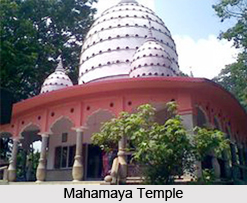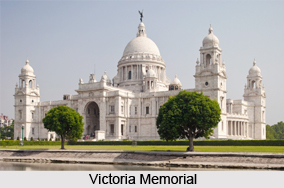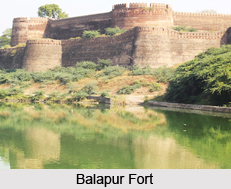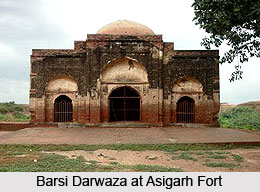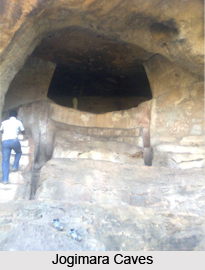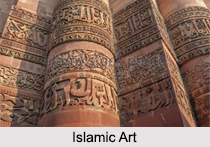 Islamic Art works produced from the 7th century onwards in places which were inhabited by Muslim populations. The entire extent of Islamic architectural works includes fields as varied as architecture, calligraphy, painting and ceramics among others.
Islamic Art works produced from the 7th century onwards in places which were inhabited by Muslim populations. The entire extent of Islamic architectural works includes fields as varied as architecture, calligraphy, painting and ceramics among others.
Islamic art has expanded from many sources like Roman, Early Christian art and Byzantine. The influence of the Sassanian art of pre-Islamic Persia was of supreme significance.
History of Islamic Art
Islamic Art in India came with the advent of the Delhi Sultanate and the Slave dynasty. They brought with them elements and styles of Islamic art. With the founding of Islamic kingdoms in Gujarat, Kashmir, Bengal, Malwa, Jaunpur and the north Deccan, Persian traditions gradually started fading away and an original form of Islamic art was now developed. This art was the result of the interaction between Muslim and Hindu art of the region.
Though artistic objects were not much in production at this time, manuscript illumination was a major art during this initial era of Muslim rule in India. The Sultanates were later replaced by the Mughals and the greatest Islamic art in India was produced during this period. There was seen the development of a distinctive plan and style in Islamic Architecture and this was seen reflected in the various splendid monuments built during this time.
Elements of Islamic Art
Islamic Art does not just refer to the devotion only. It includes the rich and diverse Islamic culture as well. The combined nature of Islamic Art developed on the foundation of Pre-Islamic traditions in the various countries conquer and a closely integrated blend of Arab, Turkish and Persian traditions brought together in all parts of the new Muslim Empire.
It is the art of a development formed by a mixture of historical conditions, the take-over of the Ancient World by the Arabs, the enforced union of a vast territory under the banner of Islam, a territory which was in turn raid by various groups. From the beginning, the direction of Islamic Art was largely determined by political structures which cut across geographical and sociological boundaries.
The Arabesque style used in Islamic art is mostly held symbolic of the all pervasive and infinite nature of Allah. A choice specimen of calligraphic writing is often a prominent decoration in a room. A frieze of inscriptions was a common adornment of a building. The best expression of Islamic art can be found in architectural constructions, especially the mosque.
Influences on Islamic Art
The Arab part is at all times the most significant. It contributed the basis for the development of Islamic Art with the message of Islam, the language of its Holy Book, the Quran and the Arabic form of writing. The importance of the Turkish element in Islamic culture can perhaps best.
A number of sources have gone into the making and development of Islamic art. These include Roman, Early Christian art and Byzantine styles which were adapted in Islamic art as well as architecture. A major influence which had a deep impact on Islamic art is that of the Sassanian art of pre-Islamic Persia. The various Central Asian nomadic incursions introduced yet newer elements into Islamic art.
